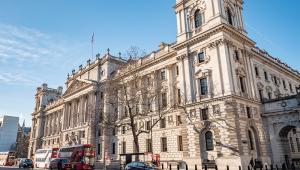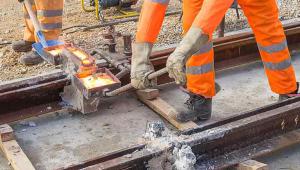19 January 2010
Some of the highest contributions to the London Crossrail project will come from developers working in boroughs furthest from the line, under proposals published earlier this week.
London Mayor Boris Johnson published a consultation paper on January 17 on using his Community Infrastructure Levy powers for Crossrail. The levy will be collected on new developments which are approved from the spring 2012. According to the agreement struck with the government to build the line, the mayor must contribute £300m towards the £14.5bn project through the levy, which developers pay councils to help fund new infrastructure.
Under the mayor’s plans, developers working across the capital will have to pay the levy, but how much they will pay will vary from borough to borough.
The consultation proposes three tax bands, based on residential land values rather than proximity to Crossrail. This means, for example, that developers in Richmond-upon-Thames and Wandsworth – neither of which is on the Crossrail route – would contribute £50 per square metre of each new building towards the project.
But those in Barking & Dagenham and Newham, which are both on the route, would pay only a £20 rate.
The middle band of £35 includes both boroughs on the line and distant ones such as Barnet and Bromley.
Richmond-upon-Thames has protested that developers in the southwest London borough will face the highest level of levy payments even though the line does not serve the area.
Virginia Morris, Richmond’s Cabinet member for environment called the mayor’s plan ‘wholly unfair’.
‘Boris Johnson is proposing to charge developers in Richmond-upon-Thames the highest rate to fund a new railway that will not benefit the borough at all,’ she told Public Finance.
‘To be classed the same as the more central areas – particularly those which will be directly benefiting from Crossrail – is inequitable.’
But Johnson’s consultation paper said that every borough would feel economic benefits, even those relatively removed from the line.
It put annual benefits for Barnet at £55m and for Croydon at £36m. The borough expected to enjoy the greatest benefits is Westminster at £115m, followed by Newham at £99m and Greenwich at £98m.
The mayor said: ‘Every corner of London will benefit once construction is complete and despite the current financial pressures, I am committed to ensuring London meets its fair share of the cost.’
There are certain exceptions to the levy, such as schools, hospitals, social housing and buildings of less than 100 square metres.
Crossrail will run 118km from Maidenhead to Shenfield in Essex through new tunnels under central London. Branches will serve Heathrow airport and the London docklands.



















